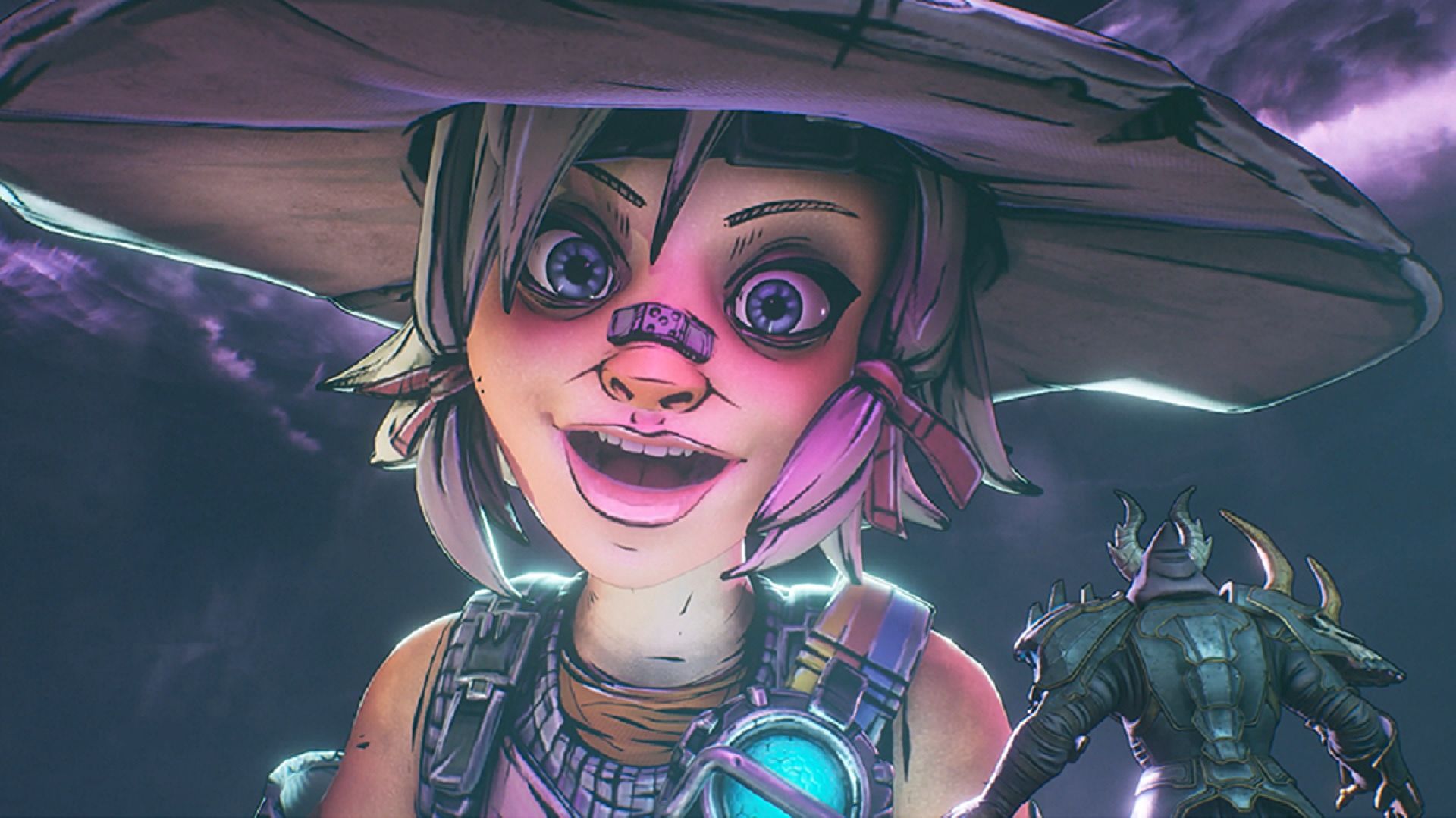It might be a Borderlands 3 expansion in everything but name but Tiny Tina’s Wonderlands feels like a maturing of a series that needed it. The Finger Guns Review.
I’ve long attested that the ‘Tiny Tina’s Assault on Dragon Keep’ DLC was amongst the best content to ever come out of the Borderlands franchise. If you’ve not played it, it has all the hallmarks of a Borderlands game – explosions, guns, garish humour – but swaps out the sci-fi setting for a table top fantasy one. This setting is part of the D&D inspired “Bunkers & Badasses” game you’re playing with the titular Tiny Tina acting as a chaotic good dungeon Bunker Master whose irreverence for the rules is only bested by the absurdity of her quests. This DLC was truly great, so it was no surprise that Gearbox revisited the idea with Tiny Tina’s Wonderland.
It’s the same teenage version of Tiny Tina we find here (rather than the older version of Borderlands 3). The explosives-obsessed lead character has managed to entice a new group of players to her Bunker and they’re going to be subjected to her unique brand of role playing violence. Around the table, acting as fellow players and guides to the adventure, are Captain Valentine (voiced by Andy Samberg) and Frette, a violently impulsive robot (voiced by Wanda Sykes). As the player, you take the role of the unnamed “Fatemaker” whose created character will be the centre of the story.
The set-up is simple: After the Dragon Lord is freed from his D20-styled imprisonment, he sets out to take over the Wonderlands by dethroning the current monarch, Queen Butt Stallion. Your mission is simple – take this evil doer down. There’s depth here though, something we’ll get into later…
Bordering on Borderlands
When Tiny Tina’s Wonderlands was announced, the titular character’s voice actor Ashley Burch said “People that love Borderlands will find lots of elements to love about Wonderlands”. She wasn’t kidding. The game play formula that Gearbox have used for every Borderlands game is adapted wholesale here. You’ve got guns – what feels like an infinite variety of them, each with their own stats – that make numbers pop out of enemy heads as you plug them with bullets arrows. Spells replace grenades but they now work a lot like the teleporting ‘nades in Borderlands 3. The respawn system is exactly the same, as is the map, the inventory system, the loot colouring, the respec machines, the XP system – I could go on but you get the picture. It’d be very easy to pass Tiny Tina’s Wonderlands off as more Borderlands 3 but in a fantasy setting and a different coat of paint.
That’s not entirely accurate though. There are a few interesting differences that do offset Tiny Tina’s spin-off adventure from the Borderlands proper, aside from the fantasy D&D theme.
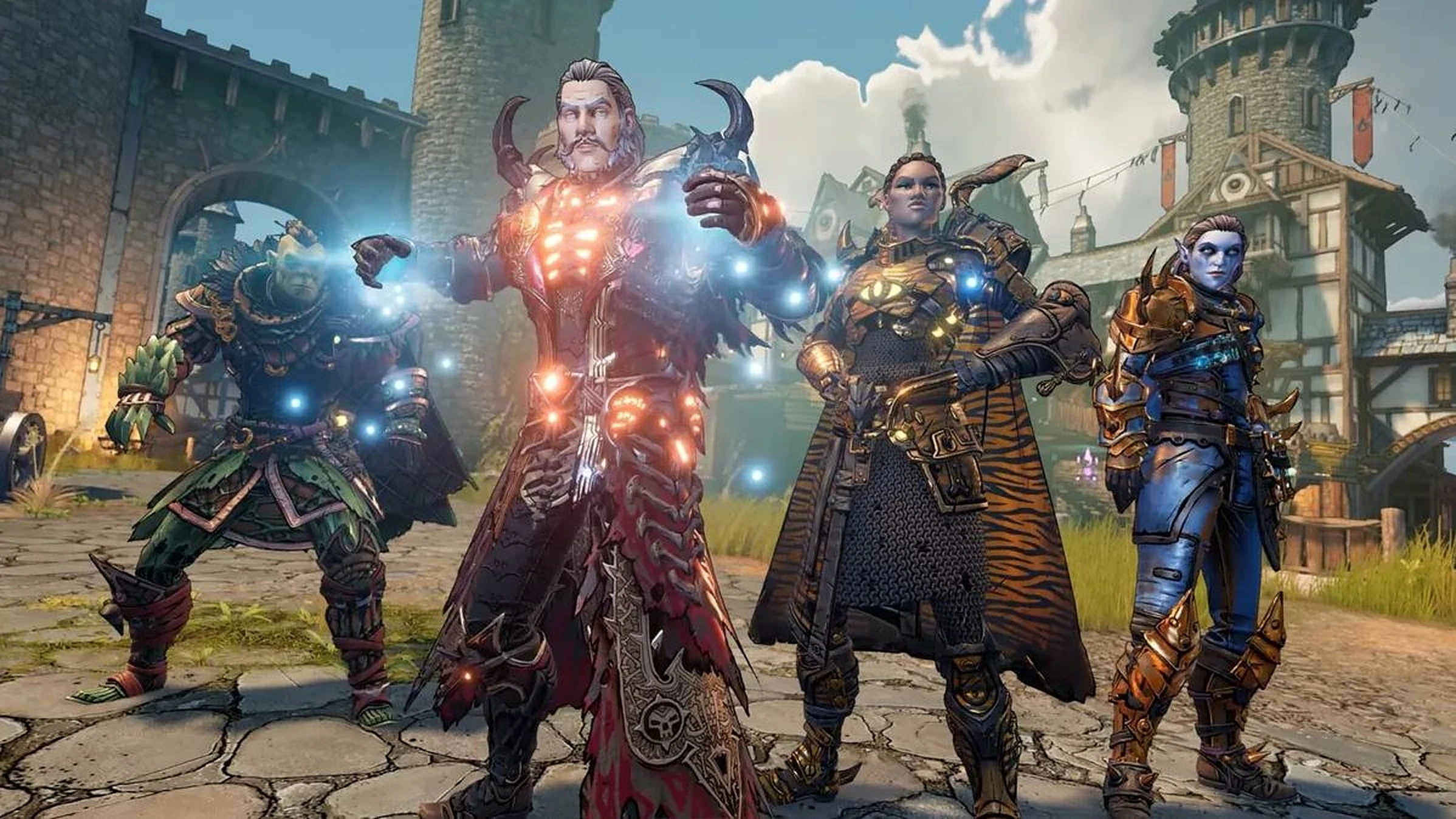
The primary difference is that instead of choosing from the pre-defined characters that come with their own abilities, here you get to craft your own. There’s no Sirens or Operatives or Gunzerkers. There’s just the Fatemaker that you can make look however you want in an impressive create-a-hero suite. Once you’re happy with the aesthetic, you can choose a class. There’s 6 to choose from at the start of the game and each comes with their own strengths. Some have companions that fight alongside you. Others focus on dealing particular elemental damage. Each class comes with a persistent ability, like increased Critical Hit chance or the Enraged skill, as well as 2 “Action Skills”. These are abilities you can perform after a cooldown that’s tied to the class theme. For example, the Spore Warden can create frost cyclones or summon an Ethereal Bow.
Each class also has its own development tree with abilities and perks to unlock as you level up. Eventually you’ll be able to add a second class to the character which means you can diversify your build to strengthen up weaknesses or really double down on the best aspects of your character. On my first run, I chose to start with a Stabbomancer before later choosing to add the Brr-zerker class as a secondary. Both classes have a focus on melee attacks and the combination of increased critical chance and frost damage made close quarters combat really spicy and enjoyable.
A Cut Above?
Close quarters combat hasn’t ever really been an aspect of Borderlands outside of the few characters that specialise in it (I’m looking at you Zer0). In Tiny Tina’s Wonderlands, the melee weapon gets its own gear slot so that every character class can have a bash. These swords, daggers, axes and more have their own stats like the guns do, indicating things like damage dealt and speed of strike. Striking an enemy isn’t just a means of putting distance between you and whatever got close here. For some builds, its among the most effective ways of putting something in the ground.
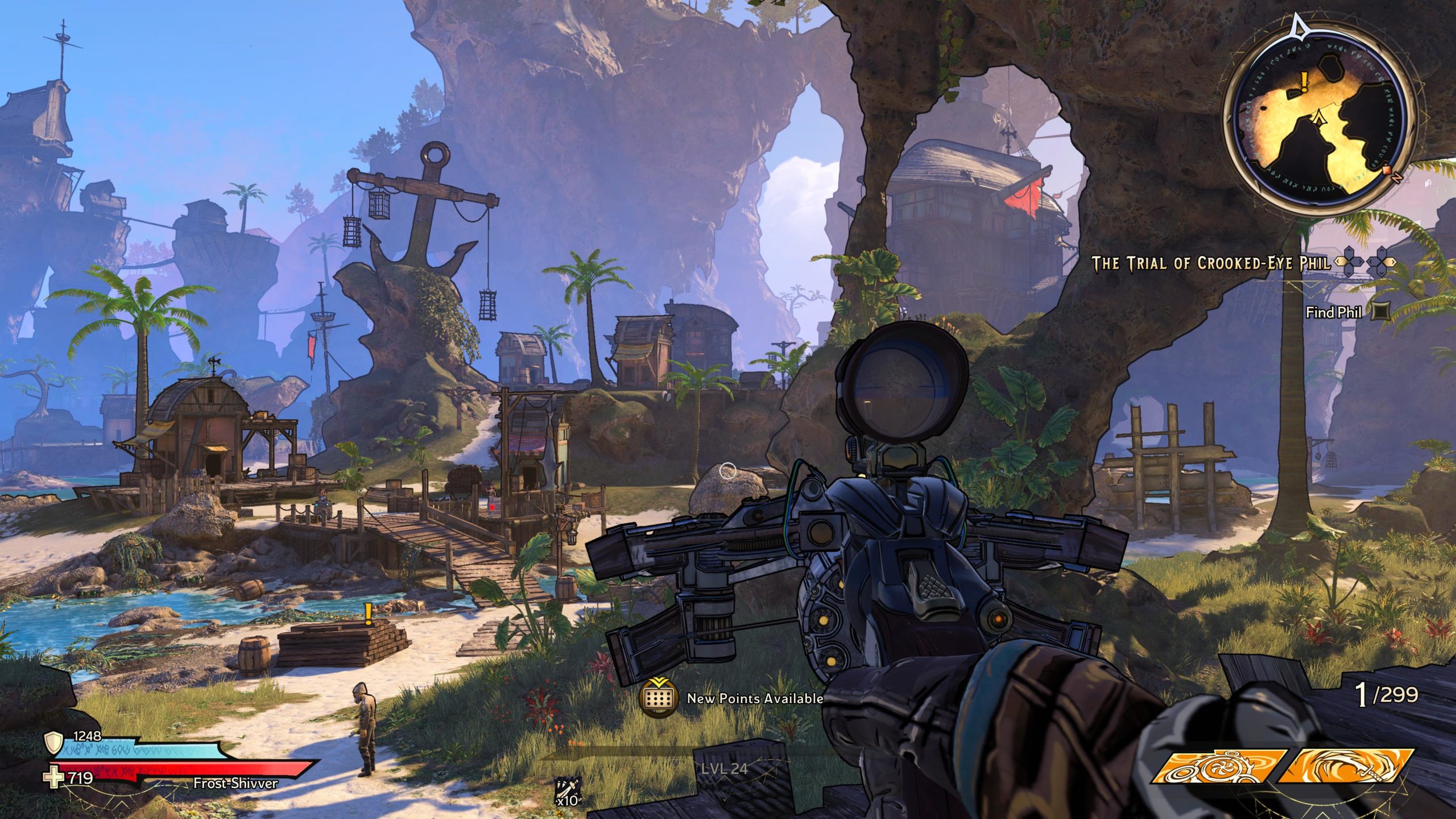
This does add a little something new to the Borderlands formula without it feeling totally out of place too. I found myself torn between some melee weapons after becoming quite attached to them through play, something I’ve always found to be true for weaponry in general from the Borderlands series. As is kind of the default across the whole of gaming with melee weapons, the heavier and slower the weapon is, the more damage it does – but sometimes you’ll pick up something which defies conventions and just kicks ass. I still had this one Legendary dagger equipped long after I should have ditched it, even though the rest of my gear was 150 levels or more higher than it, because it still got the job done.
Underground, Overworld, Wombling Free
One of the big differences between Tiny Tina’s Wonderlands and Borderlands is the structure. Rather than having those big open spaces of Pandora where you’ve got to drive around in a Catch-A-Ride, TTW has “The Overworld”. This is the table top view of the Wonderlands where your character is presented via a big-headed model that can move between the actual levels of the game.
While you’re traversing the Overworld, you’ll come across side-quests, bridges, optional dungeons and new level locations that have nothing to do with the main narrative thread. You’ll also come across random encounters, like in a RPG. Kind of like Pokemon, these can spawn when you’re trotting through long grass or dangerous areas and a physical enemy model will then chase you. If they touch you without you attacking them, this will trigger a battle. Set in a series of self contained arenas, you’ve got to blast to the snot out of a set number of enemies which will end the encounter.
While these can be mildly annoying when you’re trying to get to somewhere on the Overworld quickly, they do add a themed aspect to Tiny Tina’s Wonderlands that builds out the Table Top RPG aspect of the game. It further develops the Overworld, expanding on the aesthetic and D&D elements, as one of the most unique aspects of the game that stands it out from just another Borderlands title.
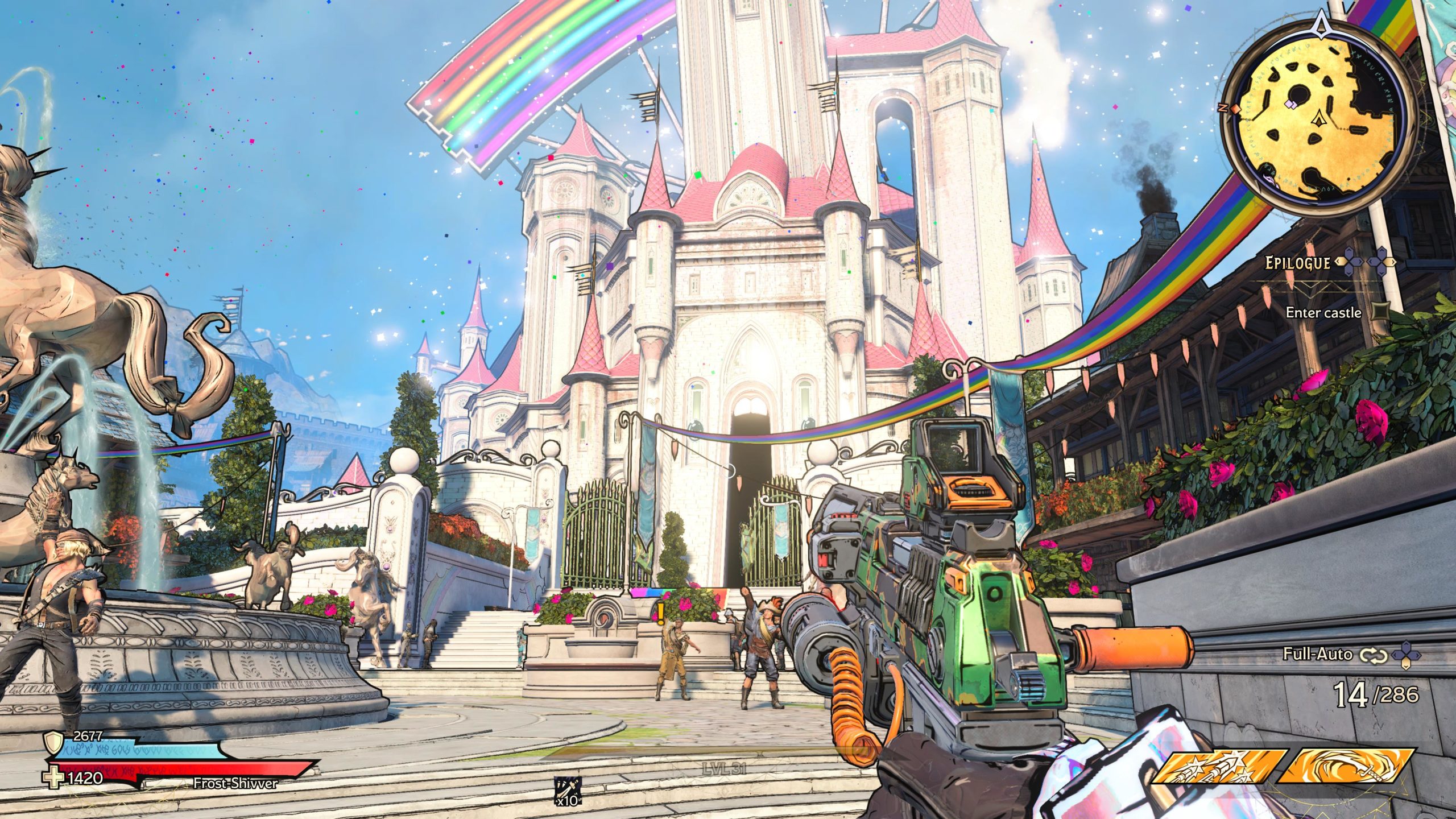
A Tale As Old As Tina
The Borderlands series has always starred some of the strongest storytelling in the looter shooter genre (admittedly, the bar is very low). That’s an aspect that’s retained for TTW. The unique narrative framing – playing a game that’s about playing a game – opens up some really interesting dynamics here. Tina as an unreliable narrator who’ll change aspects of the story on a whim. Your team mates – Valentine and Frette – bounce off one another, often with light hearted banter, to guide the player and to steer the narrative too. There’s layers here that mean that while you’re shooting stuff, you might also be getting chatter that’s informing the events of the table top game or developing a different border for the narrative in the real world.
The fragility of Tiny Tina as a character become an almost heart warming edge to the narrative. The Dragon Lord, expertly voiced by Will Arnett who’s obviously having a whale of a time voicing this character, acts not only as a villain for the player to defeat but a foil to Tina too. I won’t spoil the wider narrative beats but the latter half of the game explores the importance of the game Bunkers & Bad Assess to Tina and it underpins a story that’s much deeper than it appears on the surface.
You’ll get the most out of this story if you’ve a fan of Borderlands games. One of the most emotive parts of the game feels like a reward for long time players that newcomers will totally miss. Sure, this is a perfectly acceptable jumping on point if you’re new to the series but there’s some story beats late on that probably could have done with further explanation for newbies.
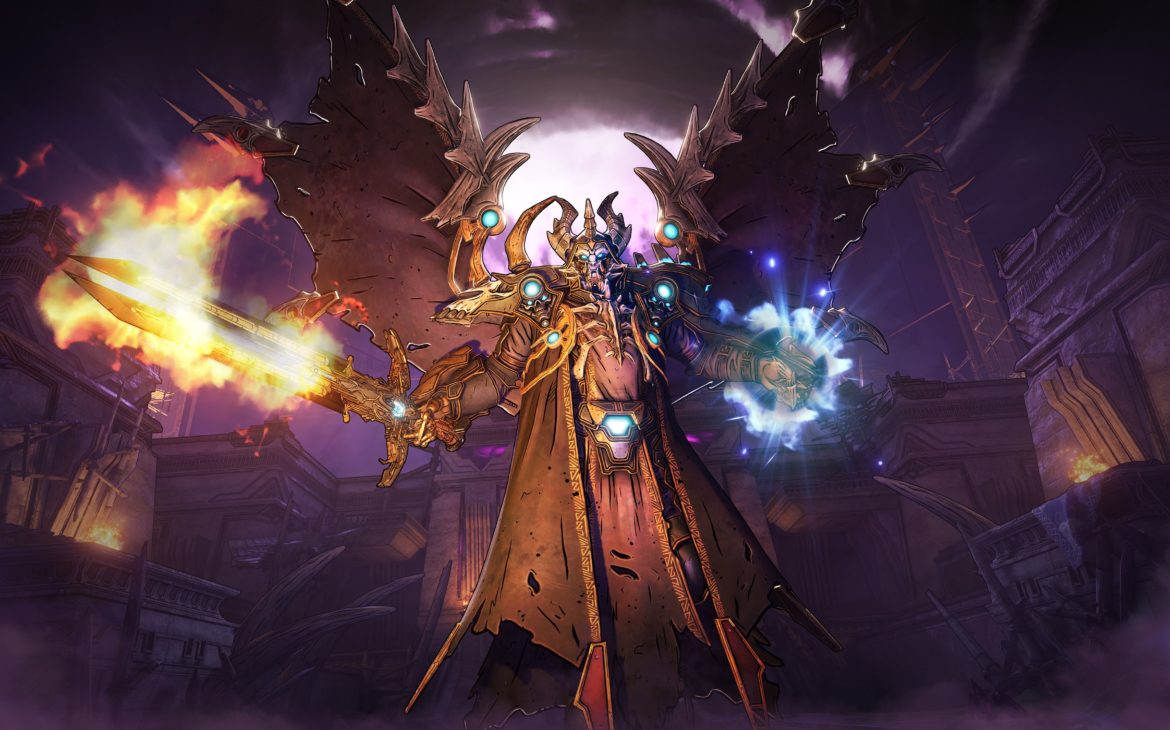
Slap & Tickle
Where Tiny Tina’s Wonderlands differentiates itself the most from the core Borderlands games is in its maturity. Don’t get me wrong – there’s still that goofy, crass, occasionally crude sense of humour, present and correct. You’ll hear Mr. Torgue go off on one of his bleep filled tirades but you’ll only hear it only once. Claptrap is in the game alongside his personal brand of unearned importance and slapstick stupidity but it’s just a cameo. Tina’s unique turn of phrase – “They’re looking to rip you from ass to face” being a personal highlight – is balanced with a fragility and sincerity which makes you care for the character beyond her being essentially a meme soundboard.
All of the trademark lunacy is here, but for the first time in the Borderlands series, I didn’t ever feel that the game was punching down to get a laugh. There’s no mutations of the Pandoran wastelands to poke fun at. There’s no gags at the expense of minorities or vulnerable groups. It’s still very funny but it doesn’t ever feel like Tiny Tina’s Wonderlands is trying to be “edgelord funny”.
Instead, Tiny Tina’s Wonderlands leans on pop culture refences much more than other Borderlands game. There’s an entire quest line that feels like one big Monkey Island refence. Fantasy stories like Jack & The Beanstalk and King Arthur’s quest for Excalibur are given that dark Borderlands spin to come out equally twisted and hilarious. The meta jokes and recurring gags – the continual debate of ‘is it flotsam or jetsam?’ had me howling – feel smarter than they do crass. There’s even a few TikTok trends in here for good measure. Genuinely, the writing in this game is among some of the best that Borderlands has to offer.
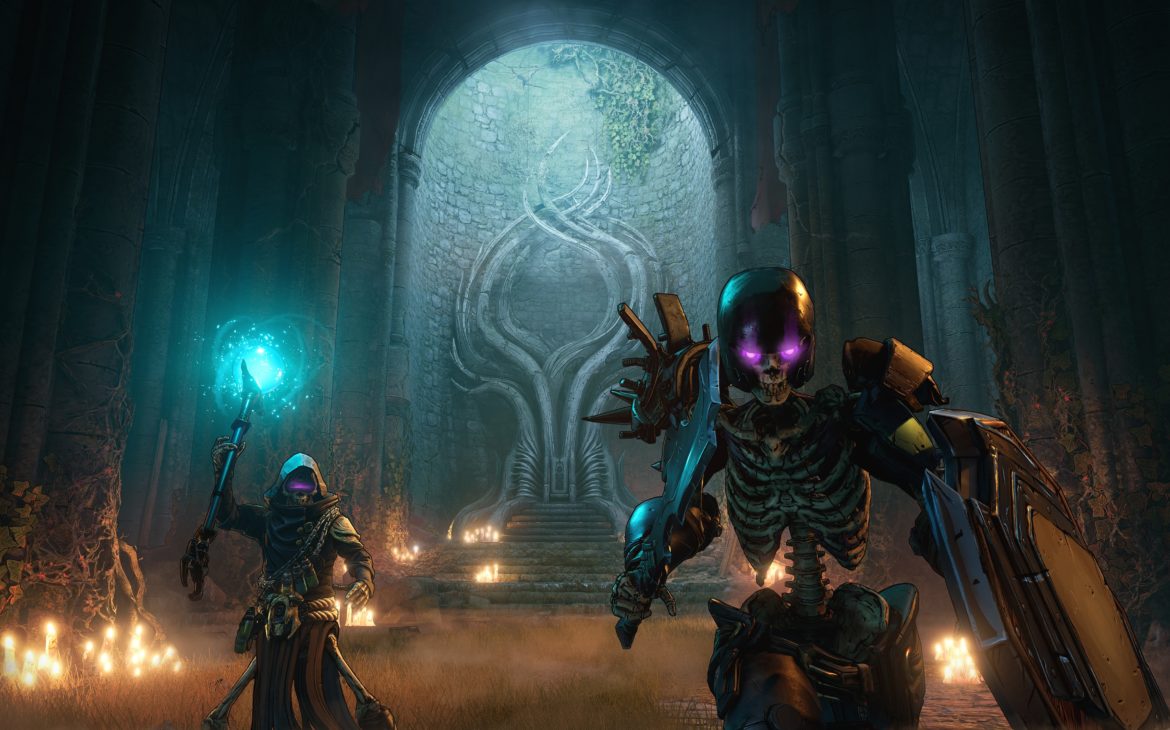
An essential game for fans of Borderlands
To wrap it up in a single phrase, I’d describe Tiny Tina’s Wonderlands as ‘a compact and novel expansion of everything Borderlands 3 did right without any of the bloat’. The main story path lasts around 15 hours. You can double that if you want to complete all of the side quests and have a decent stab at the end game content. Quadruple it if you want to pick up all the collectables too.
If you’re a fan of Borderlands, Tiny Tina’s Wonderlands is an essential game. You’ll find new sides of characters you thought you knew well here, dotted between the explosions and absurdity. I’d probably recommend playing Borderlands 2 and Assault on Dragons Keep before playing this game to newcomers. You’ll just get much more out of it in the long run.
The caveat with any Borderlands game is that it won’t be for everyone. That’s no different here. Some people will be as turned off by shooting bullet sponge dragons as they were by shooting bullet sponge Goliaths and psychos. For those that get a kick out of popping tens of thousands of enemies in the melon with a bow-gun that shoots red blobs while the word “CRITICAL” fills the screen though, there’s nothing quite like this series. In that vein, Tiny Tina’s Wonderlands is among the most mature, creatively compact and intricately crafted content to ever come out of Borderlands.
An essential game for fans of Borderlands, Tiny Tina’s Wonderlands is a spin off that’s worth exploring. What’s more, this game feels like a turning point for the series as it becomes smarter and funnier than it is goofy and crude.

Tiny Tina’s Wonderlands is available now on PS5 (review platform), PS4, Xbox One, Xbox Series and PC.
Developer: Gearbox
Publisher: 2K Games
Disclaimer: In order to complete this review, we were provided with a promotional copy of the game. For our full review policy, please go here.
If you enjoyed this article or any more of our content, please consider our Patreon.
Make sure to follow Finger Guns on our social channels –Twitter, Facebook, Twitch, Spotify or Apple Podcasts – to keep up to date on our news, reviews and features.
